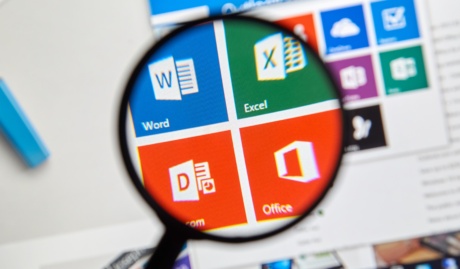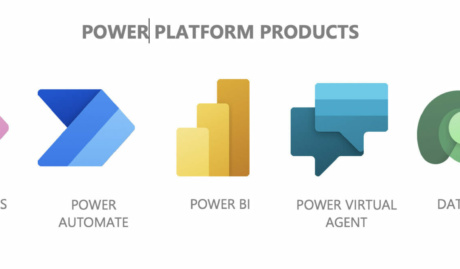Excel has been the backbone of business reporting for decades, and honestly, it’s brilliant at what it does. Most growing businesses start their reporting journey there, and for good reason—it’s familiar, flexible, and everyone knows how to use it.
But here’s the thing: Excel reporting can quietly become your biggest productivity drain without you even realising it. After helping businesses with their technology for almost 20 years, We’ve seen this pattern play out countless times. What starts as a simple monthly report gradually evolves into a complex web of spreadsheets that consumes hours of valuable time each month.
When Excel Still Makes Perfect Sense
Don’t get me wrong—Excel isn’t the enemy here. We still see plenty of situations where it’s absolutely the right tool for the job. Take those quarterly board reports or annual summaries, for instance. If you’re pulling together information that doesn’t change frequently and you’re comfortable with the manual process, Excel handles this beautifully.
Similarly, if you’re working with smaller datasets—maybe hundreds or a few thousand rows—Excel manages this without breaking a sweat. And when you need to quickly analyse a specific problem or dive into a one-off investigation, Excel’s flexibility makes it perfect for that kind of exploratory work.
The sweet spot for Excel remains those static reports that don’t change much and where you’re genuinely happy updating them manually each period. There’s nothing wrong with this approach if it’s working for your business.
The Moment Everything Changes
But there’s usually a moment when businesses realise their Excel reporting has quietly taken on a life of its own. We call it “spreadsheet archaeology”— hunting through different versions to find the “final final FINAL” report.
Or maybe you’ve noticed that preparing your monthly reports now takes an entire day instead of the hour it used to take. You’re copying and pasting data from your CRM, then your accounting system, then that other database, and by the time you’re finished, you’re already thinking about how you’ll need to do it all again next month.
The real wake-up call often comes when a key person goes on holiday and suddenly no one else knows how to update the reports. I’ve seen businesses scramble for weeks.
More troubling is when data accuracy becomes a guessing game. Different report versions tell different stories because they were created at different times using different sources. Management meetings become exercises in figuring out which numbers are correct.
Another common frustration is when your reports start hitting Excel’s performance limits. Files that take forever to open, constant crashes when you try to refresh data, or worse—losing work because the file corrupted. These aren’t just minor inconveniences; they’re signals that you’ve outgrown what spreadsheet-based reporting can reliably deliver.
Business Intelligence Benefits: Power BI for Australian Companies
Power BI isn’t about creating prettier reports, though they certainly look more professional. It’s about solving these very real business problems that Excel reporting creates as you grow.
The biggest transformation comes from connecting your reports directly to your data sources. Instead of manually gathering information from your CRM, accounting system, and various databases each month, Power BI pulls this data automatically. That monthly day of preparation becomes a few minutes of reviewing updated dashboards that refresh themselves.
This automation means you’re always working with current data rather than month-old snapshots. When a potential customer asks about your latest performance metrics, or when you need to make a quick decision based on recent trends, the information is already there, reflecting what’s actually happening in your business right now.
The consistency factor can’t be overstated either. When everyone in the business is working from the same data source, those frustrating “which version is correct?” conversations disappear. Your sales manager, operations team, and financial controller are all looking at the same numbers, updated at the same time, eliminating confusion and building confidence in your business intelligence.
Power BI also handles much larger datasets without Excel’s performance issues. Reports stay fast and responsive as your data grows, with no corruption risks.
Key Signs It’s Time to Make the Switch
The clearest indicator that Excel reporting has become counterproductive is when data preparation consumes more time than data analysis. Australian businesses typically reach this tipping point when they’re spending several hours each month just gathering and formatting data before meaningful analysis can begin. Other warning signs include team members working with different versions of the same report, creating compliance risks around data accuracy, and critical business intelligence depending on one person’s Excel expertise.
Excel to Power BI Migration: Professional Implementation
The beauty of working with experienced professionals is that you don’t need to worry about learning new software or managing the technical complexity. We handle the entire transition process, from connecting your data sources to building the dashboards that will replace your current Excel reports.
The process typically starts with understanding your current reporting needs and pain points. We’ll look at your existing Excel reports, identify which data sources they draw from, and design Power BI solutions that not only replicate what you have but enhance it with real-time updates and better visualisation.
Most businesses are surprised at how quickly they see results. Within a few weeks, what used to be a day-long monthly reporting exercise becomes a quick review of automatically updated dashboards. The time savings alone usually justify the investment, but the improved accuracy and timeliness of information often proves even more valuable for decision-making.
The Bottom Line
Your time is valuable, and business intelligence solutions should accelerate decision-making, not hinder it. If monthly reporting is a burden rather than providing valuable insights, automated dashboards and data visualisation tools offer a proven path forward.
The transformation from manual Excel processes to automated Power BI reporting typically delivers measurable ROI within 90 days for Australian businesses. When spreadsheet archaeology becomes a monthly ritual, that’s technology working against your business growth rather than enabling it.
Ready to explore automated reporting solutions for your business? We help Australian businesses transition from Excel to Power BI dashboards, handling the technical complexity while you focus on using better business intelligence for growth.










































